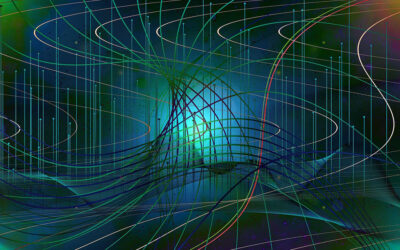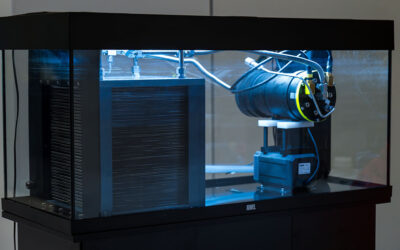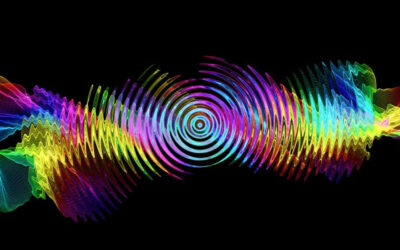A new study reveals that vibrations in solid materials, known as phonons, might actually enhance the performance of tiny structures called quantum dots as single-photon sources — a surprising twist, given that phonons are typically viewed as sources of disruption in quantum systems.
The researchers found that phonons can improve a property called photon number coherence, which affects how well a quantum system preserves its delicate quantum behavior. “This is a measure of how ‘quantum’ the emitted photon is,” explained Paul Hagen, a researcher from the University of Bayreuth and one of the study’s authors.
This discovery is particularly important for quantum dots, which are already promising single-photon sources. “Quantum dots do not have the problems of other single-photon sources,” said Hagen. “They are truly single-photon sources, and as we have found, the photon number coherence of the light they produce can be tuned to a large extent by choosing different excitation parameters.”
These findings could pave the way for highly tunable single-photon sources with applications in quantum communication, cryptography, and other developing quantum technologies.
Why single photons matter
Quantum technologies are rapidly advancing, with applications ranging from ultra-secure communication and powerful quantum computing to highly precise sensors and imaging systems. These innovations have the potential to revolutionize fields such as cybersecurity, drug discovery, materials science, and navigation.
Among these, quantum communications stand out for their ability to enable ultra-secure data transmission using the principles of quantum mechanics, such as quantum key distribution, which makes eavesdropping virtually impossible. However, their proper operation relies heavily on the availability of dependable single-photon sources.
These photons carry information as qubits, the quantum equivalent of classical bits. Unlike classical bits, which can only be 0 or 1, qubits can exist in a superposition of both states simultaneously, enabling more complex and secure data encoding.
“Single photons can be used as a ‘flying qubit’ and can thus transport information that is truly quantum,” said Hagen. “For example, one can encode the logical ‘0’ in a polarization state of a single photon and the logical ‘1’ in another. Then, the state of the photon can be prepared in a superposition between them. This means that, just like Schrödinger’s cat is alive and dead at the same time, we can transmit a qubit, which is simultaneously in the ‘0’ and ‘1’ state.”
A source’s ability to emit exactly one photon at a time is crucial for ensuring secure message transfer. According to quantum mechanics, measuring the state of a system inevitably alters it. Thus, if only one photon is emitted, an eavesdropper cannot measure it without being revealed.
However, if multiple photons carrying the same information are accidentally emitted, an eavesdropper could intercept just one of them, extract the necessary information, and leave the others unaffected because these extra photons are not linked up in the same way. These unaffected photons would then reach the receiving party without any signs of tampering, allowing the eavesdropping to go unnoticed and compromising security.
Turning to quantum dots as single photon sources
Finding a reliable single-photon source is challenging. One option to generate them that has been explored by the scientific community has been through lasers, but these come with significant limitations. For example, to prevent multi-photon emissions, a laser must operate at extremely low intensity, which drastically reduces the rate of information transfer.
These challenges have driven researchers to explore alternative single-photon sources, with quantum dots emerging as one of the most promising candidates.
These tiny semiconductor materials, only a few nanometers in size, exhibit unique optical and electronic properties due to their small scale, where quantum effects play a significant role. When driven by laser light, quantum dots can emit exactly one photon at a time.
Unfortunately, quantum dots have long been considered problematic as single-photon sources due to their interaction with the surrounding environment, particularly the vibrations of their crystal lattice. These vibrations can affect the energy levels of the electrons within the atoms that make up the quantum dot, disrupting the control over the emitted photons’ timing, wavelength, and number, which is crucial for reliable single-photon emission.
However, the study published in Advanced Quantum Technologies challenges the assumption that the interaction between quantum dots and phonons — particles representing lattice oscillations at the quantum level — is always detrimental to reliable single-photon emission.
A surprising phonon effect
To investigate this, the research team conducted a detailed quantum mechanical study of the phonon interactions with quantum dots and their impact on the emitted photon properties.
“In our study, we focus on quantum dots, which are small ‘islands’ of a semiconductor like gallium arsenide, embedded in a second semiconductor such as aluminum gallium arsenide. These materials are known to be excellent for single-photon emitting quantum dots,” Hagen explained.
The researchers examined the complex interactions between quantum dots and phonons, studying how they affect the properties of the emitted photons. To their surprise, they discovered that under certain conditions, such as the right intensity of the driving laser, phonons can actually enhance the quantum dot’s photon number coherence, a key property that affects how well the emitted light maintains quantum behavior.
This happens because phonons affect how the quantum dot absorbs energy. When the quantum dot isn’t fully excited by the laser pulse, it emits light that is a mix of two possible states—a phenomenon known as superposition. The key here is that when both states are present at the same time, the relationship between them becomes more important. This helps make the emitted light behave in a more “quantum” way, increasing photon number coherence.
To achieve this, the team relied on advanced numerical techniques and even developed their own mathematical algorithm, a process that took more than a decade to complete.
“Simulating the quantum dots and especially its interaction with phonons is very challenging. The reason for this is that phonons carry memory of the quantum dots’s past states,” Hagen explained. “If the dot gets excited, it does not just interact with the phonons occurring due to thermal excitation, but also the ones it emitted itself previously. Therefore, it is necessary to include this memory effect in quantum mechanical calculations, which typically goes back about 3–4 picoseconds.”
Where to from here?
While this study represents significant progress and holds promise for more reliable quantum communication with higher information transfer rates, there is still much left to explore. “The investigation of photon number coherence in quantum dot-emitted single photons is a young field, and we have merely laid the groundwork,” Hagen said.
Future research will focus on refining the mechanisms that drive single-photon emission in quantum dots, as well as improving their design and surrounding environment, to make the process even more precise and reliable for specific applications.
Reference: Paul C. A. Hagen et al, Photon Number Coherence in Quantum Dot-Cavity Systems can be Enhanced by Phonons, Advanced Quantum Technologies (2025). DOI: 10.1002/qute.202400455
Feature image credit: geralt on Pixabay

















